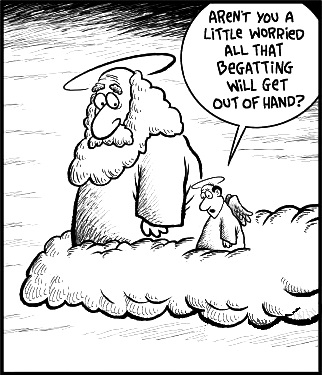|
The
|
|||||||||||||||||||||||||||||||||
THE BURGENLAND BUNCH NEWS - No. 298 June 30, 2019, © 2019 by The Burgenland Bunch All rights reserved. Permission to copy excerpts granted if credit is provided. Editor: Thomas Steichen (email: tj.steichen@comcast.net) BB Home Page: the-burgenland-bunch.org BB Newsletter Archives: BB Newsletter BB Facebook Page: TheBurgenlandBunchOFFICIAL Our 23rd year. The Burgenland Bunch Newsletter is issued monthly online. The BB was founded in 1997 by Gerald Berghold, who died in August 2008. |
|||||||||||||||||||||||||||||||||
| Current Status Of The BB: * Members: 2864 * Surname Entries: 8731 * Query Board Entries: 5771 * Staff Members: 13 |
|||||||||||||||||||||||||||||||||
|
|||||||||||||||||||||||||||||||||
1) THE PRESIDENT'S CORNER (by Tom Steichen)  This
month's newsletter is a reduced "tidbit" and standard-sections edition, without the usual three
full-size articles. Why? (you might ask...) The simple answer is I've been too busy with other things to come up with
ideas for, then to research and prepare worthwhile articles; further, I have used up all the articles that others have
contributed. This
month's newsletter is a reduced "tidbit" and standard-sections edition, without the usual three
full-size articles. Why? (you might ask...) The simple answer is I've been too busy with other things to come up with
ideas for, then to research and prepare worthwhile articles; further, I have used up all the articles that others have
contributed.Perhaps the most difficult aspect of providing a monthly newsletter is continually coming up with the ideas that inspire articles. Given an underlying idea and sufficient supporting material, I can easily put together an informative and interesting article. But without those starting points, I flounder. So, if you have an idea or a collection of materials that begs to be put in article form, share with me. I'm happy to write the article, co-write the article, or just be an editor and soundboard for you should you prefer to write the article. It is not often I hit a lull in creativity, but it happens. This time it occurred when I did not have a back-log of completed articles to bridge my creativity gap. Hopefully, I'll do better next month... but I'll do a lot better if you help me get started! As for tidbits this month, we start by telling you about yet another transcribed set of Church records, compliments of Susan O'Meara. We follow that with an update on the count of records that FamilySearch.org has added this year... hmmmn, if this was a competition with Susan, I think they won (to a tune of 180,000 records added for each one Sue transcribed!). And that is followed by a GenTeam.au records update ("only" 630,000 new records ...but a bunch for Burgenland!). And, of course, I provide an update on what Ancestry.com has added this year. The next bit is about a kerfuffle in Northern Burgenland concerning the potential construction there of a rail terminal and a supra-regional logistics center to service freight train traffic from Russia and China. One side says it will ruin the environment, the other that it will brings many jobs and lots of money to a region that needs both... I suspect the true impact, either way, is less than each side argues... but we'll have to wait and see. Unfortunately, the next bit announces the retirement of BB staff member and Hungarian Editor, Emmerich Koller. Emmerich was with us 10 years and his wisdom will be missed. A
"semi-regular" bit—the St. Louis Spring Gathering—is
next then we close with our "regular" tidbits: the BB Facebook-page
update, the book sales, a recipe and a humor bit... got to have those!
The first two I list merely because of their size; they are the largest collections added this year (so far). The next
two are of general interest (assuming your ancestors emigrated to the United States). The four after that document marriage
collection additions for three top US destinations... always useful! The second-to-last is a valuable collection if your
ancestors went to Canada; I assume the images match the indexed pages (at ~ 42 people per page). The last... well it had the
most new images. Of greatest interest to us are the records provided by Jürgen Brandweiner, who added indexed Urbarial
records from the Burgenland villages of Bocksdorf, Eisenhüttl, Heugraben,
Olbendorf, Rohr, Stegersbach and Stinatz for the years 1634, 1643, 1648,
and 1660. He added similar records for the Styrian villages of Burgau, Neudau, Wörth
from the 1741 Urbar. These are of interest to us because they include records for the Burgenland villages of
Burgauberg, Neudauberg and Wörtherberg. The last tool in beta test is a new one called ThruLines that lets you link your family tree to your DNA results. As for his BB contributions, he wrote a number of articles for the BB newsletters over the years, provided excellent
translation services for both German and Hungarian documents, and was a knowledgeable voice in staff discussions and in
assisting members. |
|||||||||||||||||||||||||||||||||
2) HISTORICAL BB NEWSLETTER ARTICLES Editor: This is part of our series designed to recycle interesting articles from the BB Newsletters of 10 years ago. For this month, though, I jumped back 20 years, to June 1999. In this article, Gerry tells us about the German and Hungarian names for the geographical/political entities that describe locales in Burgenland ...and about the necessity to be precise about those names ...advice that remains true today. THE BURGENLAND BUNCH NEWS - No. 59 June 15, 1999 AUSTRIAN GEOGRAPHY – GEMEINDEN AND BEZIRKS (by Gerry Berghold) Geographical accuracy is essential to genealogical research. There are many cities and villages with the same names. This is doubly true of the Germanic regions. In the same way that we identify American locales by name, county and state, so too should we identify Austrian locales by name, Bezirk and province. Some prefer to translate "Bezirk" as county (instead of district) and "Province" as state. My personal preference is to use district and province. There is another term much in use in Austria which really has no American counterpart - it is the term "Gemeinde" or community. Within the "Gemeinde" we find many smaller villages which have lost their administrative identity in the same way that smaller postal "villages" in the US get absorbed by expanding urban areas, the so-called "suburbs," in German sometimes referred to as "ausser Stadt" (outer city). An example is Güssing, which has absorbed Rosenberg and Langzeil. If you look for those names in a village listing you won't find them. Yet your immigrant ancestor will say he came from Rosenberg! His uncle had a vineyard in Langzeil! You know, (ach, now we have it) bei Güssing in das Süd Burgenland! There is another term which can cause confusion - this is "Ortsteile" = parts of the place. Ortsteile include villages which are administered partly or completely by another such as Neusiedl, Limbach and Eisenhüttl administered from Kukmirn. Look for them in the Kirsner and Peternell book and you won't find them in the Gemeinden listing. You will find them as "Ortsteile" in the listing of "Die Gemeinden und Ihre Ortsteile." To further confuse the issue, local politics and changing times can often cause a village to become more or less independent. They may be mentioned in one book or publication as independent and ignored a few years later. While Bezirk Güssing covers 26 Gemeinden (including Stadt Güssing), the Gemeinden cover another 28 Ortsteile, making 53 villages and one Stadt exclusive of the absorbed villages. Another Austrian (and German) practice is to define similar villages by the rivers, river valleys or other unique places in which they are located. Thus we have Heiligenkreuz im Lafnitztal (Heiligenkreuz in the valley of the Lafnitz River), Mannersdorf an den Rabnitz (Mannersdorf on the Rabnitz River) and Podersdorf am See (Podersdorf on the Lake). There are many others. When speaking of the importance of geography, I like to tell the following story: Someone once asked me if I knew anything about a village in Austria. He said it was his immigrant ancestor's village, mentioned in some papers he had inherited and, while he said he didn't have a good map, he found a place by that name just outside a major Austrian city. He was pretty sure it was the correct place because he found people there with his family name (a common one) and in viewing the church records, while he hadn't found the correct birth date of his ancestor, he had found one with the same name that was so close it had to be his. He also found some, but not all, siblings with the correct names! As a result he spent much time gathering "family" data from that village and added it to his computer files. It was only when he found another village of the same name and again a concentration of his family name that he began to have doubts. When he searched those records, he found "exact" birth date and sibling matches. Further study proved his original "find" to be invalid. It can happen, particularly with common names. Most Americans have little knowledge of foreign geography. Not much American, much less European geography, is being taught in our schools. You should read some of the queries I get. When looking for that village of origin, be sure you are aware of other places with the same name. Don't confuse the Heiligenkreuz in the Vienna Woods (bei Baden) with the one along the Hungarian border (im Lafnitztal). Get yourself a good map (1:200,000 or less) and use it. Also familiarize yourself with a gazetteer of the place and time period you are researching (the LDS has them in their location index). At least look at the village listing in the Austrian phonebook. Likewise, we should pay attention to Hungarian geography, being aware of Hungarian names, former Megye (county) and possibly even közösség (Gemeinde), particularly if you are working in the pre-1921 period. In my computer files, I show birth place as Heiligenkreuz, Burgenland, Austria, but the notes for the first entry with this village also say, "in the southern Burgenland, Bezirk of Jennersdorf with the full name of Heiligenkreuz im Lafnitztal, 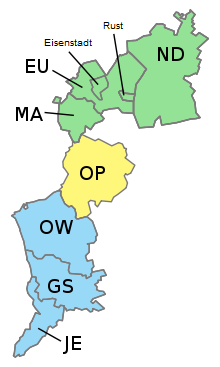 known
as Rabakeresztur, Vas Megye (Komitat Eisenburg), Hungary pre-1921. Includes Poppendorf." A historical
description (like Leser's) follows that note. known
as Rabakeresztur, Vas Megye (Komitat Eisenburg), Hungary pre-1921. Includes Poppendorf." A historical
description (like Leser's) follows that note.The seven Burgenland "Bezirks," north to south are Neusiedl am See [ND on map] (28 Gemeinden - Andau to Zurndorf), Eisenstadt [EU] (24 Gemeinden - Breitenbrunn to Zillingtal), Mattersburg [MA] (19 Gemeinden - Antau to Zemendorf-Stöttera), Oberpullendorf [OP] (28 Gemeinden - Deutschkreutz to Weppersdorf), Oberwart [GS] (31 Gemeinden - Bad Tatzmannsdorf to Wolfau), Güssing [ND] (26 Gemeinden - Bocksdorf to Wörtherberg), and Jennersdorf [JE] (12 Gemeinden - Deutsch Kaltenbrunn to Weichselbaum). In addition there are the free cities of Rust and Eisenstadt. That's a total of 170 villages and cities, although we know there are about 400. The difference are mainly Ortsteile. See what I mean? Do you know the Bezirks and Gemeinden for your villages? |
|||||||||||||||||||||||||||||||||
3 ETHNIC EVENTS LEHIGH VALLEY, PA Saturday, July 13: Sommerabend in the Pavilion at the Lancaster Liederkranz. Hosted by the Lancaster Liederkranz Hobbychor and the Alleweil Jung Folk Dancers. Info: www.lancasterliederkranz.com Sunday, July 21: Jägermeister Day at the Coplay Sängerbund. Music by the Josef Kroboth Orchestra. Info: www.coplaysaengerbund.com Thursday-Sunday, July 25-28: Parish Festival at Holy Family Roman Catholic Church in Nazareth. Polka Mass on Saturday. Music by the Josef Kroboth Orchestra on Sunday. Info: www.holyfamilynazarethpa.com Saturday, July 27: 134th Anniversary of the Reading Liederkranz. Music by The Adlers. Info: www.readingliederkranz.com NEW BRITAIN, CT Friday, Jul 5, 7 pm: Heimat Abend. Austrian Donau Club, 545 Arch Street, $3. Music by Frank Billowitz. Friday, Jul 19, 7:30 pm: Heurigan Abend. Austrian Donau Club, 545 Arch Street, $3. Music by Schachtelgebirger Musikanten. |
|||||||||||||||||||||||||||||||||
4 BURGENLAND EMIGRANT OBITUARIES Margaret Bosits (née Polyak)  Margaret Bosits, 90, of Arlington Heights, Illinois died Thursday, June 6, 2019. Born on February 14, 1929 in Narda (Nahring), Hungary, she was a daughter of the late Joseph and Apolonia (Wappel) Polyak. She was a member of St. Alphonsus Liguori Catholic Church in Prospect Heights. Margaret loved to cook and prepare meals for friends and family. Nothing gave ‘gramma’ more joy than being surrounded by her loved ones, eating the delicious food and deserts that she tirelessly created with love. She was the best Wife, Mom, Grandma and Great-Grandma you could ask for! Margaret is survived by her spouse of 71 years, Imre; daughter, Ibie (Patrick) McDonough; grandchildren, Keith (Bonnie) McDonough, Craig (Becky) McDonough, Ryan (Amelia) McDonough; great-grandchildren Catlyn McDonough, Maggie McDonough, Jesse Petersen, Bella Ducey, Matt McDonough and Jack McDonough; as well as many nieces and nephews. She was preceded in death by her parents, 3 brothers and 2 sisters. Visitation Tuesday, June 11, 2019 from 9:00 am until the 10:15 am Prayers at Glueckert Funeral Home Ltd., 1520 North Arlington Hts. Rd., Arlington Hts., IL 6004 proceeding to St. Alphonsus Liquori Catholic Church, 411 North Wheeling Road, Prospect Heights, IL 60070 for a 11:00 am Funeral Mass. Interment will be at All Saints Cemetery in Des Plaines. In lieu of flowers, memorials may be given to St. Alphonsus Liguori Catholic Church. Funeral Information and condolences can be given at www.GlueckertFuneralHome.com or (847) 253-0168. Published in Chicago Suburban Daily Herald on June 9, 2019 Josephine Snipes (née Thüringer)  Josephine "Jozsi" T. Snipes, 97, of Vallejo, California, went to heaven on May 21. Born in Grosswarasdorf, Austria, on April 27, 1922, she was a daughter of the late Josef and Rosa Thüringer. Jozsi came to the United States in 1947 and became a naturalized citizen in 1950. She married Batson L. Snipes in 1953 and they have a daughter, Michaelle, and two grandsons, Matthew and Jacob. Jozsi was a teacher with the Vallejo Unified School District for 35 years. As a teacher she influenced many students and touched many lives. To this day some of her former students contact her on a regular basis. Jozsi traveled extensively. She often told of her adventures all over the world. She loved people and sharing stories with them. She also loved the symphony and theater. She was a beautiful lady and we will all miss her saying her favorite phrase… "La Di Da". At her request services will be private. Cremation and arrangements entrusted to the direction and care of Twin Chapels Mortuary, Vallejo 552-6696. www.TwinChapelsMortuary.com. Published in TimesHeraldOnline on May 30, 2019 |
|||||||||||||||||||||||||||||||||
| END OF NEWSLETTER (Even good things must end!) |
|||||||||||||||||||||||||||||||||
|
Burgenland Bunch Newsletter, copyright © 2019 by The Burgenland Bunch |
 News
News transcribe only selected
Catholic marriage records from the Deutsch Schützen (Hungarian: Német-Lö, Német-Lövo;
Kroat: Nimške Šice) parish to help trace her family lines ...but then she got carried away and has turned it into a
complete transcription project (at least for the marriage records). To date, Sue has transcribed all 435 marriages
beginning in 1828 and going through May of 1876. Further, she has transcribed 34 more selected marriage records from 1876 to
1895, for a total of 469 marriage records. Transcription of the remaining marriages for years 1876 to 1895 is underway,
though she tells me it is a slow process.
transcribe only selected
Catholic marriage records from the Deutsch Schützen (Hungarian: Német-Lö, Német-Lövo;
Kroat: Nimške Šice) parish to help trace her family lines ...but then she got carried away and has turned it into a
complete transcription project (at least for the marriage records). To date, Sue has transcribed all 435 marriages
beginning in 1828 and going through May of 1876. Further, she has transcribed 34 more selected marriage records from 1876 to
1895, for a total of 469 marriage records. Transcription of the remaining marriages for years 1876 to 1895 is underway,
though she tells me it is a slow process. Since the beginning
of the year, FamilySearch has announced the addition of over 225 million new indexed records and over 1.6 million new
record images. Those records come from 32 different countries and touch 263 different record collections. Over 185 of those
collections are for areas of the United States, however, the largest new collection, at nearly 80 million records, was for
South African civil deaths. Below I list a few select collections:
Since the beginning
of the year, FamilySearch has announced the addition of over 225 million new indexed records and over 1.6 million new
record images. Those records come from 32 different countries and touch 263 different record collections. Over 185 of those
collections are for areas of the United States, however, the largest new collection, at nearly 80 million records, was for
South African civil deaths. Below I list a few select collections: New
Records at GenTeam,
New
Records at GenTeam,  To
date, the Russian broad-gauge rail has been laid into the Košice area in eastern Slovakia and an agreement is in place to
extend it to Bratislava and the Austrian border. The final step will be to cross into the EU and connect to its transport
systems. That is proposed to be done by creating a massive new rail freight yard and terminal (3 miles long, 1000 feet wide)
and a 21-million-square-foot supra-regional logistics center to trans-ship containers onto EU rail and roads. The planned
capacity would be 50 trains and 20,000 containers a week (~1 million containers per year).
To
date, the Russian broad-gauge rail has been laid into the Košice area in eastern Slovakia and an agreement is in place to
extend it to Bratislava and the Austrian border. The final step will be to cross into the EU and connect to its transport
systems. That is proposed to be done by creating a massive new rail freight yard and terminal (3 miles long, 1000 feet wide)
and a 21-million-square-foot supra-regional logistics center to trans-ship containers onto EU rail and roads. The planned
capacity would be 50 trains and 20,000 containers a week (~1 million containers per year).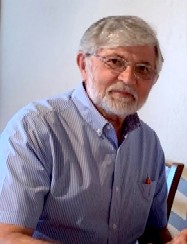 BB Hungarian
Editor, Emmerich Koller, retires from the BB Staff: At just a month short of ten years on the BB staff, Emmerich
Koller has chosen to retire. He joined the BB staff in July of 2009, with title Hungarian Editor.
BB Hungarian
Editor, Emmerich Koller, retires from the BB Staff: At just a month short of ten years on the BB staff, Emmerich
Koller has chosen to retire. He joined the BB staff in July of 2009, with title Hungarian Editor. 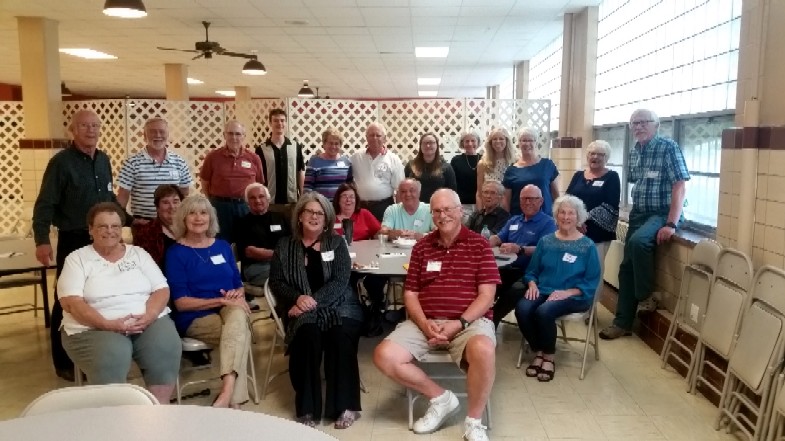
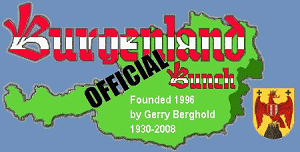 The
Facebook Bunch (from Vanessa Sandhu):
The
Facebook Bunch (from Vanessa Sandhu):  Update
for book "The Burgenländer Emigration to America": Here is this month's update on purchases of the English issue of
the 3rd edition of Dr. Walter Dujmovits' book "Die Amerika-Wanderung Der Burgenländer."
Update
for book "The Burgenländer Emigration to America": Here is this month's update on purchases of the English issue of
the 3rd edition of Dr. Walter Dujmovits' book "Die Amerika-Wanderung Der Burgenländer." Fried
Catfish (Wels Gebraten)
Fried
Catfish (Wels Gebraten)
